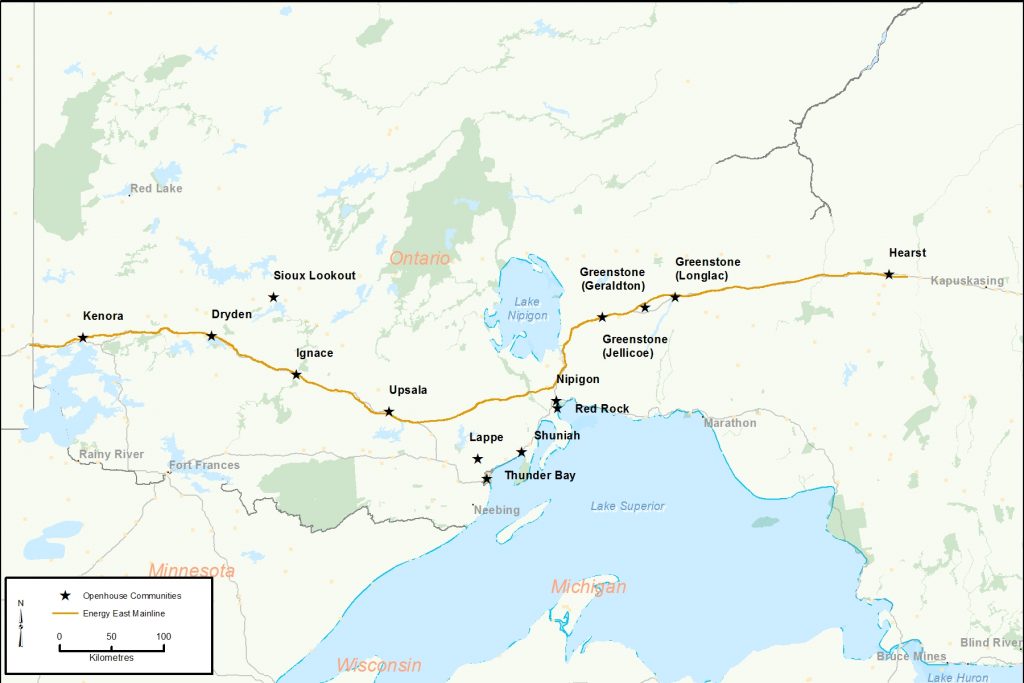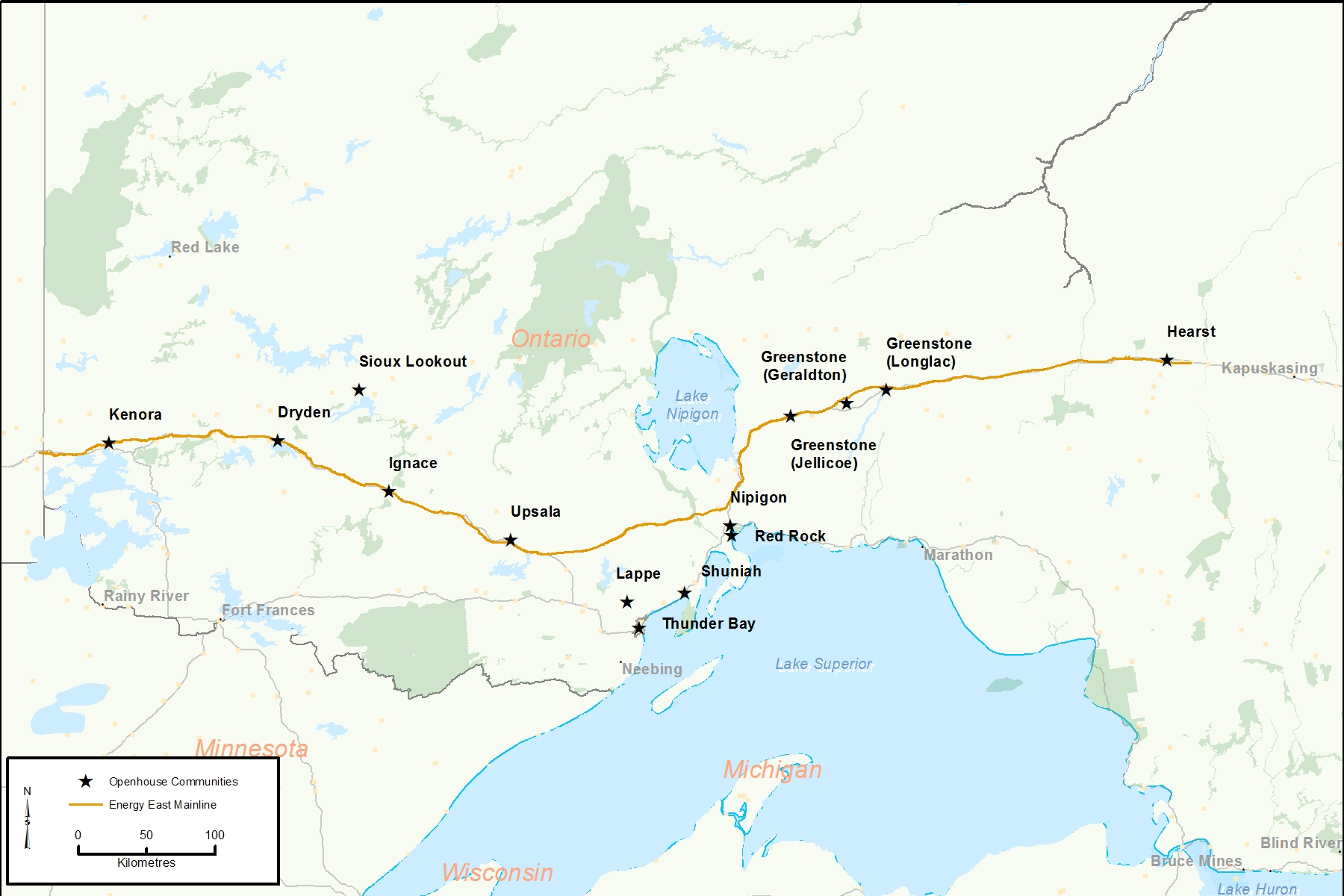All water is equally important and all waterways that would be crossed by the proposed Energy East pipeline are “significant.” This resounding message was delivered by residents of northwestern (NW) Ontario in a draft report released in April.
The report can be found here. The public is invited to send comments to this email address.

The report was prepared for Common Voice Northwest (CVNW), a not-for-profit organization that researches economic and public policy issues in northwestern Ontario and that is participating in the National Energy Board (NEB) review of Energy East. CVNW formed an Energy East Task Force that was mandated to develop a NW Ontario definition of “significant water crossing” and identify particularly sensitive waterways that need protection if the Energy East pipeline is approved.
In January, the task force held meetings in communities across NW Ontario, from Kenora to Hearst, and invited the public to submit comments online. It also reviewed available provincial data, conducted literature reviews, and interviewed local experts, First Nations, and key stakeholders.
The message received from NW Ontario residents through the CVNW consultations was loud and clear: all water is equally important and it is not possible to rank some waterways and ecosystems as more significant than others. This is a big difference from the approach taken by TransCanada in its application to build the Energy East pipeline, which identifies just ten “Major Water Crossings” in the report’s study area which stretches 1,000 km from the Manitoba border to Hearst, Ontario. The CVNW report identifies an additional ten water crossings that should be considered for enhanced environmental protection.
The CVNW report also criticized TransCanada’s narrow approach to evaluating potentially significant water crossings and sensitive ecological areas. It called for a widening of TransCanada’s analysis to capture a greater range of impacts on species at risk, rare plants, provincial parks and conservation areas, commercial fisheries, populated areas, navigable waterways, drinking water, fish and wildlife habitat, and ecologically sensitive areas.
CVNW found that TransCanada’s deficient approach to identifying major water crossings along Energy East’s route, and the risks associated with those crossings, could raise questions about the credibility and quality of the pipeline’s review.
Residents of NW Ontario made it clear that they are concerned about the risks of an oil spill from the Energy East pipeline on our most precious resource—fresh water. All rivers, lakes, streams, aquifers, wetlands and waterways must be protected, not just a select few identified by TransCanada.
CVNW says it will not be taking a position either way on Energy East. But we are, and so can you. The proposed pipeline is too risky for our water, land and climate. Tell the federal government to reject the risk Energy East pipeline.








